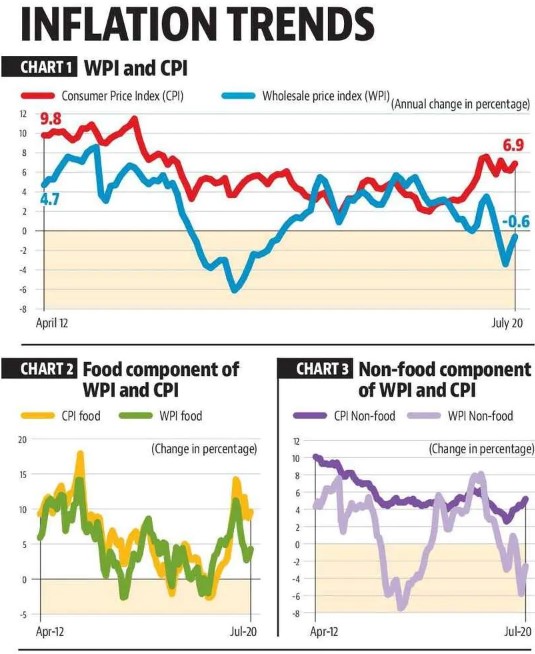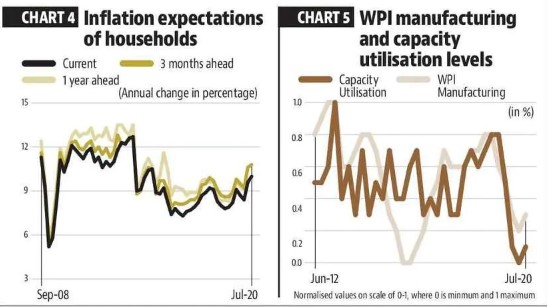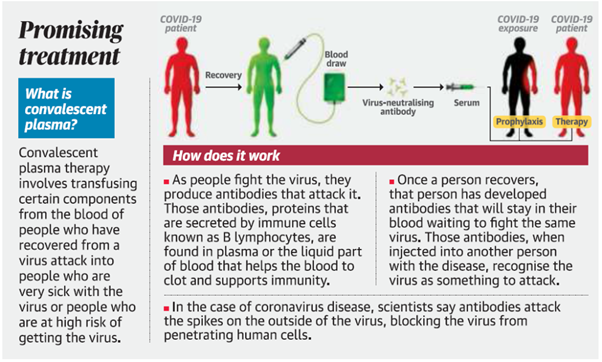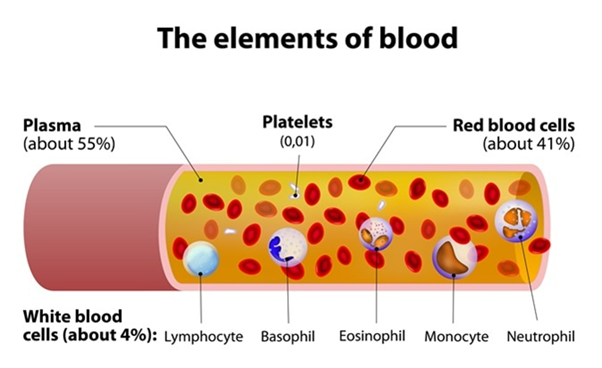Contents
- National Council for Transgender Persons
- Citing SC: Madras HC orders enhanced pension
- Inflation, monetary policy and growth
- Guidelines for Plasma Therapy
- Not possible to fully block Chinese companies
- Bombay HC: FIRs against Tablighi Jamaat “scapegoat”
NATIONAL COUNCIL FOR TRANSGENDER PERSONS
Focus: GS-II Social Justice
Why in news?
The Ministry of Social Justice and Empowerment has constituted the National Council for Transgender Persons, a requirement under the Transgender Persons (Protection of Rights) Act, 2019.
National Council for Transgender Persons
- The National Council for Transgender Persons is India’s First and is a Statutory Body since it is formed under Transgender Persons (Protection of Rights) Act, 2019.
- The Main aim of the National Council for Transgender Persons is to mainstream the transgender community’s concerns, focusing on livelihood issues as well as to raise awareness about the trans community, so that transgender persons are accepted within families and in the larger society.
- Another aim is to ensure that transgender welfare boards are set up in all States and essential needs of the transgender community, like housing, food, healthcare and education are met.
Functions of the National Council for Transgender Persons
- Advising the Central government on the formulation of policies, programmes, legislation and projects with respect to transgender persons.
- Monitoring and evaluating the impact of policies and programmes designed for achieving equality and full participation of transgender persons.
- Reviewing and coordinating the activities of all the departments.
- Redressing grievances of transgender persons.
- Performing such other functions as prescribed by the Centre.
Composition
- Its chairperson will be the Union Minister of the Ministry of Social Justice and Empowerment.
- It will consist of Representatives from five states or Union Territories (one each from the north, south, east, west and northeast regions, on a rotational basis) and Five members of the transgender community (one each from the north, south, east, west and northeast regions).
- The council will also have joint secretary-level members from the Ministries of Health, Home, Minority Affairs, Education, Rural Development, Labour and Law.
- In addition, there will be a member from the Department of Pensions (Ministry of Personnel, Public Grievances & Pensions), NITI Aayog, National Human Rights Commission and National Commission for Women.
Transgender Persons (Protection of Rights) Bill, 2016
- The Transgender Persons (Protection of Rights) Bill, 2016, defines a transgender person as one who is partly female or male; or a combination of female and male; or neither female nor male.
- Additionally, the bill states that the person’s gender must not match the assigned gender at birth.
- Every transgender person in the country must obtain an identity certificate which will be used as the proof of recognition of identity as a transgender person and to avail all the rights under the Bill.
- The identity certificate would be granted by the District Magistrate on the recommendation of a Screening Committee.
- The screening committee for recommending the certificate would comprise a medical officer, a psychologist or psychiatrist, a district welfare officer, a government official, and a transgender person.
- The Transgender Persons (Protection of Rights) Bill, 2016 prohibits discriminating with transgender people in education, employment, healthcare and other areas.
- The Bill directs the central and state governments for providing welfare schemes to the Transgender community in these areas.
- The Bill also provides for the punishment of up to two years’ imprisonment and a fine for offences like compelling a transgender person to beg, denial of access to a public place, physical and sexual abuse, etc.
-Source: The Hindu, Hindustan Times
CITING SC: MADRAS HC ORDERS ENHANCED PENSION
Focus: GS-II Social Justice
Why in news?
The Madras High Court, citing the Supreme Court verdict in the landmark R.C. Gupta case (2016), has ordered enhancement of pension payable to a litigant found eligible for the revision of pension on higher wages.
1995 pension scheme
- Under the Employees’ Pension Scheme, 1995, on the determination of pensionable salary, the maximum pensionable salary was limited to Rs. 6,500 per month.
- In 2014, under the Employees’ Pension (Amendment) Scheme, the maximum pensionable salary was revised to Rs. 15,000.
No cut-off dates
- In 2016, the Supreme Court in the R.C. Gupta case ruled that there was no cut-off date to determine the eligibility of the employer-employee to indicate their option (the contribution paid on the salary exceeding ₹6,500 per month from the date of commencement of this scheme or from the date the salary exceeded Rs. 6,500, whichever is later, and the 8.33% share of the employer is remitted into the pension fund, the pensionable salary will be based on such higher salary).
- The court was of the view that a beneficial scheme ought not to be allowed to be defeated by reference to a cut-off date.
- Further, the Supreme Court held that in the situation where the deposit of the employer’s share was on actual salary and not the ceiling amount, all that the Provident Commissioner was required to do was adjustment of accounts. He/she could seek the return of all such accounts that employees concerned may have taken or withdrawn from their Provident Account Fund before granting the benefit of the pension scheme.
-Source: The Hindu
INFLATION, MONETARY POLICY AND GROWTH
Focus: GS-III Indian Economy
Introduced
- Consumer Price Index (CPI), India’s benchmark inflation measure, grew at 6.9% in the month of July.
- Headline inflation has been growing at more than 6%, the upper limit of RBI’s tolerance level, since December 2019.
- March was the only exception. India’s other inflation measure, Wholesale Price Index (WPI), has been contracting since April 2020.
Wholesale and retail inflation are diverging once again

- Food items have a share of almost 40% in the CPI basket. This is just 24% for WPI.
- Therefore, food price hikes generate stronger tailwinds for CPI.
- But the food components of CPI and WPI actually move very closely with each other.
- Difference in the weightage of food items is not the only reason for divergence in CPI and WPI.
- A comparison of non-food components of CPI and WPI brings out this fact clearly.
- WPI is focused on capturing producer costs, while CPI is representative of the average consumer basket of an Indian household.
- The CPI basket is decided after the National Statistical Office’s consumption expenditure surveys.
- CPI has components such as housing and recreation. WPI has crude petroleum and engineering goods
Inflation Expectations

- Inflation expectations of households are still high, although Inflation expectations of households have come down compared to what they were six-seven years ago.
- They are significantly above RBI’s upper band of 6%.
- RBI data also shows that trajectory of current and future inflation expectation for households has been almost identical in India.
-Source: Hindustan Times
GUIDELINES FOR PLASMA THERAPY
Focus: GS-III Science and Technology
Why in news?
The Karnataka State Government laid down the guidelines specified for convalescent plasma therapy.
Guidelines
- A recovered COVID-19 patient should have preferably had symptoms such as fever, cough and cold as there is a greater possibility of the presence of anti-SARS-CoV-2 IgG antibodies compared to an asymptomatic patient.
- That said, plasma from asymptomatic donors can be accepted if the antibodies are present.
- People who have recovered from COVID-19 and wish to donate their plasma should be in the 18 to 60 age group.
- Besides this, donors should either be male or women who have not given birth. All donors must weigh over 50 kg. This is to mitigate the risk of transfusion related to acute lung injury.
What is Convalescent plasma therapy?
- The convalescent plasma therapy aims at using antibodies from the blood of a recovered Covid-19 patient to treat those critically affected by the virus. The therapy can also be used to immunise those at a high risk of contracting the virus — such as health workers, families of patients and other high-risk contacts.
- This therapy’s concept is simple and is based on the premise that the blood of a patient who has recovered from Covid-19 contains antibodies with the specific ability of fighting novel coronavirus. The theory is that the recovered patient’s antibodies, once ingested into somebody under treatment, will begin targeting and fighting the novel coronavirus in the second patient.
- The convalescent plasma therapy is akin to passive immunisation as, according to researchers, it is a preventive measure and not a treatment for the Covid-19 disease.

Has plasma therapy been used earlier?
- The method ‘Convalescent Serum Therapy’ dates to 1918; when it was used during the outbreak of the Spanish Flu.
- After which it has been used in 2005 during the SARS epidemic.
- According to the medical journal The Lancet, it was used to improve the survival rates of patients.
- In 2009 it was used for H1N1 patients, 2014 for those infected by Ebola in 2014 and in 2015 for MERS patients in different parts of the world.
- Others serious outbreaks that have seen the use of this therapy are the SARS outbreak, Measles, HIV, polio and mumps.
Whose plasma is collected for Plasma Therapy?
- The blood is taken from the recovered patient and the plasma is separated. It is then tested for the antibodies and then administered to Covis-19 patients who is critically ill.
How Convalescent Plasma Therapy works?
- The convalescent plasma therapy uses antibodies developed within an infected person while he/she is infected with the novel coronavirus.
- These antibodies are developed in a patient as part of the body’s natural immune response to a foreign pathogen or in this case, the novel coronavirus. These antibodies are highly specific to the invading pathogen. Hence, they work to eliminate the novel coronavirus from the patient’s body.
- Once the patient has recovered, they donate their blood so that their antibodies can be used to treat other patients. The donated blood is then checked for the presence of any other disease-causing agents such as Hepatitis B, Hepatitis C, HIV etc.
- If deemed safe, the blood is then taken through a process to extract ‘plasma’, the liquid part of the blood that contains antibodies. The antibody-rich plasma, once extracted, is then ingested into the body of a patient under treatment.
Risks involved in Plasma Therapy
Besides speaking about the success of the convalescent plasma therapy, the study by John Hopkins immunologists stated some of the risks associated with it:
- Transfer of blood substances: As the blood transfusion takes place, there are risks that an inadvertent infection might get transferred to the patient.
- Enhancement of infection: The therapy might fail for some patients and can result in an enhanced form of the infection.
- Effect on immune system: The antibody administration may end up suppressing the body’s natural immune response. This will leave a Covid-19 patient vulnerable to subsequent re-infection.
What is Plasma?
Plasma is the clear, straw-coloured liquid portion of blood that remains after red blood cells, white blood cells, platelets and other cellular components are removed. It is the single largest component of human blood. Plasma comprises about 55 percent, and contains water, salts, enzymes, antibodies and other proteins.

- Composed of 90% water, plasma is a transporting medium for cells and a variety of substances vital to the human body.
- Plasma carries out a variety of functions in the body, including clotting blood, fighting diseases and other critical functions.
- Source plasma is plasma that is collected from healthy, voluntary donors through a process called plasmapheresis and is used exclusively for further manufacturing into final therapies (fractionation). Source plasma donors may be compensated for their time and effort.
- Recovered plasma is collected through whole blood donation in which plasma is separated from its cellular components. Recovered plasma may be used for fractionation.
-Source: The Hindu
NOT POSSIBLE TO FULLY BLOCK CHINESE COMPANIES
Focus: GS-III Indian Economy, International Relations
Why in news?
Despite the uproar against the use of Chinese products amid the standoff on the border in eastern Ladakh and the government’s decision to ban several apps recently, government officials say it is not possible to fully decouple the trend due to the substantial investments by Chinese companies in India.
Details
- While some measures can be taken, several Chinese investments are quite substantive, and it is not possible to fully block them.
- Intelligence assessments have also cautioned on the direct and indirect links many of these companies have with the People’s Liberation Army (PLA).
- A worrisome factor is that these Chinese companies have linkages of some sort with the Chinese military.
Significant new law
- In 2017, China passed a national intelligence law which gave Beijing powers over Chinese companies’ overseas investments as well.
- As per the Annual report of the U.S. Secretary of Defence to the Congress on the “Military and Security Developments involving the People’s Republic of China 2019”, this law requires Chinese companies, such as Huawei, ZTE, Tik Tok and others to support, provide assistance, and cooperate in China’s national intelligence work, wherever they operate.
- The law has direct security implications for all overseas Foreign Direct Investment (FDI) from China.
Questions on Chinese investments
- One of the aspects that has raised red flags is Chinese investments in Indian technology startups.
- The U.S.-China Economic and Security Review Commission, a U.S. congressional commission, said in its 2019 report, “The Chinese government’s military-civil fusion policy aims to spur innovation and economic growth through an array of policies and other government-supported mechanisms, including Venture Capital (VC) funds, while leveraging the fruits of civilian innovation for China’s defence sector.”
- This raises a direct question mark on Chinese VC investments in India including big names like Alibaba and Tencent, the second official stated.
-Source: The Hindu
BOMBAY HC: FIRs AGAINST TABLIGHI JAMAAT “SCAPEGOAT”
Focus: GS-II Governance
Why in news?
The Bombay high court struck down criminal cases registered against 34 people, including 28 foreign Tablighi Jamaat members, in Maharashtra’s Ahmednagar district, saying foreign nationals were virtually persecuted.
Details
- The Bombay High Court said that a political Government tries to find scapegoat when there is pandemic or calamity, and the circumstances show that there is probability that these foreigners were chosen to make them scapegoats.
- The material of the present matter shows that the propaganda against the so-called religious activity was unwarranted.
Background
- The Jamaat hit the headlines in March when authorities blamed a congregation at its headquarters in New Delhi’s Nizamuddin area for a jump in Covid-19 infections. The headquarters was sealed and thousands of attendees, including foreigners from countries like Indonesia, Malaysia, and the US, were quarantined.
- The Jamaat, which has followers in over 80 countries, maintained many visitors at its headquarters were stranded after the government declared a lockdown to check the pandemic spread.
- The Centre blacklisted around 1,500 foreign Tablighi members for violating their visa norms and multiple cases were registered against them across the country.
- The high court said foreigners having valid visas to enter India cannot be prevented from visiting mosques if they go there to observe religious practices.
-Source: Hindustan Times



